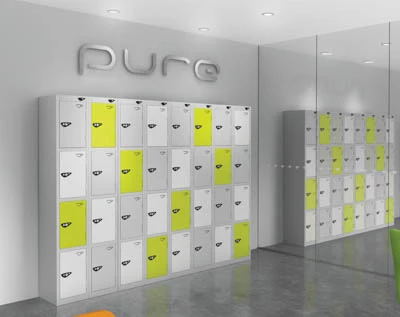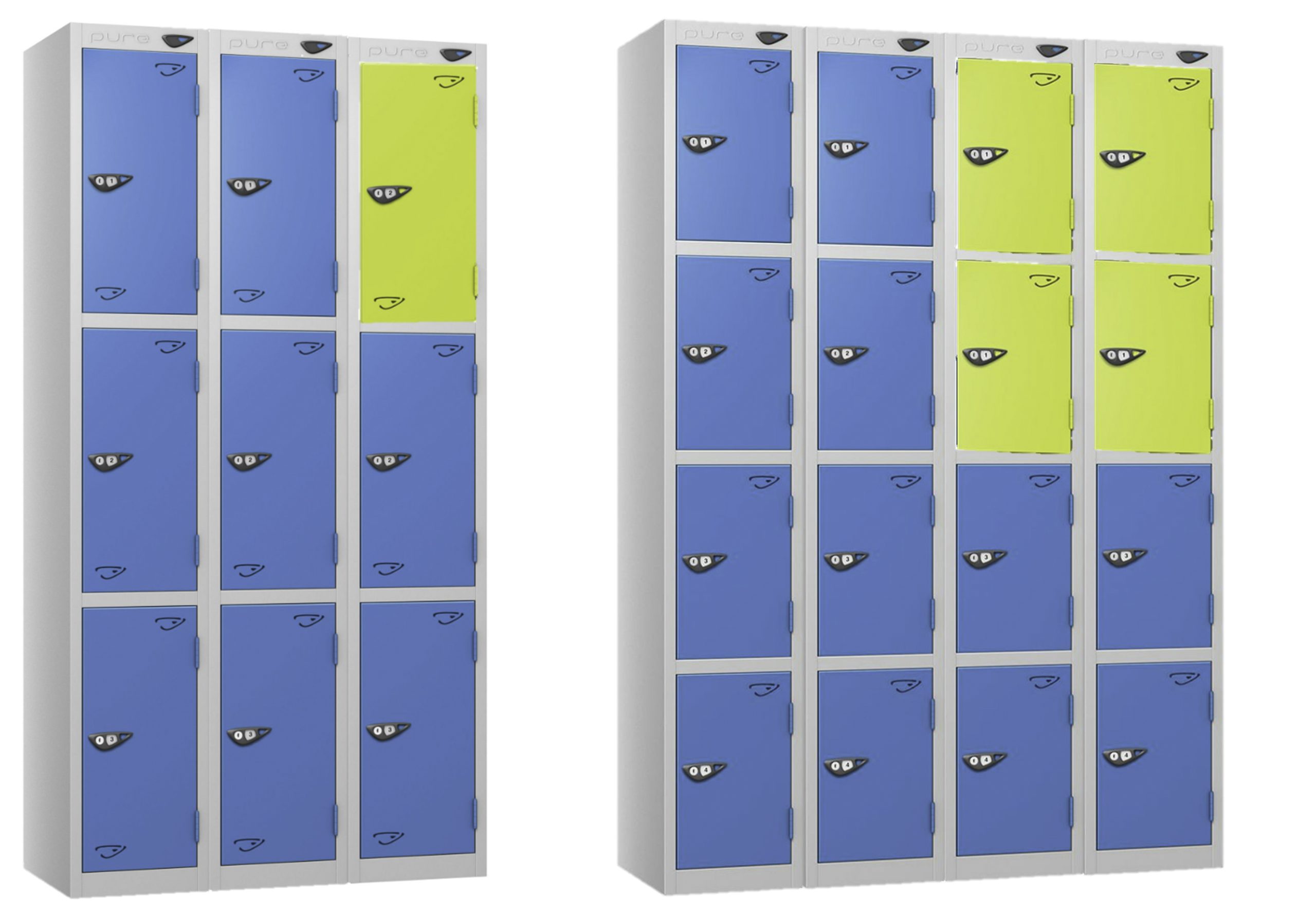The Best Hospital Lockers: Hospitals are complex spaces. They need solutions that protect people and support hygiene. One often-overlooked feature? Lockers.
Infection Control, Security and Staff Needs
In a hospital, lockers are touched by many hands. They must be secure. They must also be hygienic. From staff changing rooms to patient areas, lockers play a vital role. This blog explains how to select the right lockers for hospitals. We look at types, locking methods, sizes, paint finishes, and how to prevent infection. All recommendations align with UK healthcare needs and NHS standards.

Why Hospital Lockers Must Be Chosen Carefully
Hospital environments require high standards. Surfaces must be easy to clean. Pathogens such as MRSA or viruses like norovirus can survive for hours or even days on steel or plastic. Lockers are high-contact points. If poorly selected, they can become vectors of disease.
But with the right choices, lockers become part of your infection-control strategy. They offer clean, secure storage and support daily routines for staff and patients.
Key Locker Types for Hospital Use
Total Locker Service offers a full range of lockers for healthcare. Here are the most relevant categories:
1. Staff Uniform Lockers
Used in changing areas. Must be large, secure, and easy to clean. Look for lockers with sloping tops and internal ventilation.
2. Charging Lockers
Used for phones, tablets or medical devices. Ideal for staff rest areas and nurse stations. Choose units with secure electrical access and internal USB or plug sockets.
3. Visitor and Patient Lockers
These are temporary-use units. PIN-code or coin-return locks are ideal. They reduce key-sharing and simplify infection protocols.
4. Medical Cabinet Lockers
Designed for first-aid, pharmaceuticals or specialist kits. These require enhanced security and simple wipe-down interiors.
Locking Options and Hygiene Considerations
Choosing the right lock reduces contamination risk:
- Key locks are simple but increase hand-to-surface contact.
- PIN locks avoid key handling but require regular disinfection.
- RFID locks offer touchless access. Wristbands or cards minimise shared contact points.
- Bluetooth smart locks work via phone apps. Ideal for advanced NHS facilities with mobile infrastructure.
In high-risk areas, contactless options are preferred. They offer both hygiene and convenience.
Sizes and Compartments: Bigger Isn’t Always Better
Lockers must match their user. A staff nurse needs more space than a patient storing valuables.
Standard sizes from Total Locker Service include:
- 1800 mm height
- 300–450 mm depth
- Single or multi-compartment formats
For flexibility, opt for adjustable shelves and label holders. Perforated doors allow airflow and visibility.
The Role of Paint: Introducing NetZero Antibacterial Coating
One of the most critical surfaces in any locker is its paint finish. Traditional powder-coating can hold bacteria. But NetZero antibacterial paint, developed for healthcare environments, actively kills pathogens on contact.
Why NetZero Paint Matters:
- Kills over 99.9% of common bacteria and viruses.
- Effective against MRSA, E. coli, and COVID‑19 strains.
- Long-lasting antimicrobial effect embedded in the surface.
- Reduces need for constant deep cleaning.
Total Locker Service applies NetZero paint to lockers during manufacture. This makes them ideal for staff changing rooms, high-traffic clinical areas, and pharmacy spaces. The coating is https://safe-security-products.co.uk/fire-resistant-safe/safe, eco-friendly, and does not wear off easily, unlike sprays or stickers.
Surface Materials: Steel, Plastic, and More
Here’s how materials compare:
| Material | Benefit |
|---|---|
| Powder-coated Steel | Strong, durable, and compatible with NetZero. |
| Phenolic Core Plastic | Non-porous, water-resistant, easy to clean. |
| Stainless Steel | Industrial strength, but can harbour bacteria. |
| Copper Alloy Fittings | Naturally antimicrobial, kills microbes quickly. |
In humid areas, choose wet‑room plastic lockers. These resist water, mould, and odour. Total Locker Service offers a wide wet‑area range suited to NHS standards.
Ventilation and Sloping Tops: Better Design for Better Hygiene
Bacteria love stagnant air and dust. Locker design can fight that:
- Ventilated doors reduce odours and moisture.
- Sloping tops prevent clutter and simplify cleaning.
- Raised stands let cleaning staff reach underneath.
These features are now standard in many Total Locker Service healthcare models.
Configuration Tips for Specific Hospital Areas
Match the locker to its location:
Staff Changing Rooms
- Full-height steel or phenolic lockers
- NetZero paint
- RFID locks
- Sloping tops and benches
Clinical Offices
- Compact charging lockers
- USB or plug-in access
- PIN or Bluetooth locks
- Ventilated steel finish
Visitor Areas
- Coin-return or PIN-code locks
- Steel construction with antimicrobial paint
- Clear instructions and signage
Clean Rooms or Labs
- Wet-area phenolic lockers
- No metal fittings
- Fully wipeable interiors
Lockers as Part of Your Cleaning Schedule
To maintain hygiene:
- Clean high-touch points (handles, locks) twice daily.
- Wipe down all surfaces with hospital-grade disinfectant.
- Use copper or antimicrobial plastic handles where possible.
- Audit locker condition and cleanliness monthly.
- Replace damaged components quickly to prevent contamination.
Hospital-Friendly Bench Integration
Lockers are often paired with seating. Benches must be:
- Made from anti-bacterial plastic or sealed wood.
- Fixed to the locker base to avoid clutter.
- Wipeable with standard hospital solutions.
Total Locker Service offers bench-seating kits that match lockers exactly. These save space and improve room layout.
Hospital Infection Control: Best Locker Practices Summary
Here’s a quick guide to best locker practices in hospitals:
| Area | Locker Type | Lock Type | Surface Finish | Key Feature |
|---|---|---|---|---|
| Staff Changing | Full-height Steel/Plastic | RFID | NetZero Antibacterial | Sloping tops, bench integrated |
| Visitors/Patients | Medium-height Steel | Coin or PIN | Powder-coated + NetZero | Easy to clean, secure |
| Clinical Office | Compact Charging Locker | Bluetooth or PIN | Ventilated Powder Steel | Safe charging, cleanable |
| Pharmacy/First Aid | Lockable Wall Cabinets | Cam Lock or Digital | Smooth Steel | Secure and tamper-resistant |
| Wet/Decontam Rooms | Plastic Phenolic Lockers | RFID | Non-porous Plastic | Water-resistant, no rust |
Why Total Locker Service Is the Right Partner
Total Locker Service has years of experience in NHS and healthcare installations. Their lockers are:
- Built with infection control in mind
- Available in NetZero antimicrobial finishes
- Delivered quickly across the UK
- Customisable for different hospital zones
- Backed by maintenance and support services
They offer flexible design, safe locking options, and hygiene-focused finishes. Their lockers are suited for healthcare teams, from acute care to community hospitals.
Conclusion: Safety Starts with Smart Locker Choices
Hospital lockers are more than storage. They are tools for infection control, security, and staff wellbeing. Choosing wisely improves safety. Antimicrobial finishes like NetZero, touchless access systems, and thoughtful layout design all help.
As NHS infection control pressures rise, the humble locker becomes a powerful ally. Choose lockers that fight infection, secure belongings, and support your staff.
Visit Total Locker Service to browse healthcare lockers with antibacterial coatings, smart locking, and layout planning.
